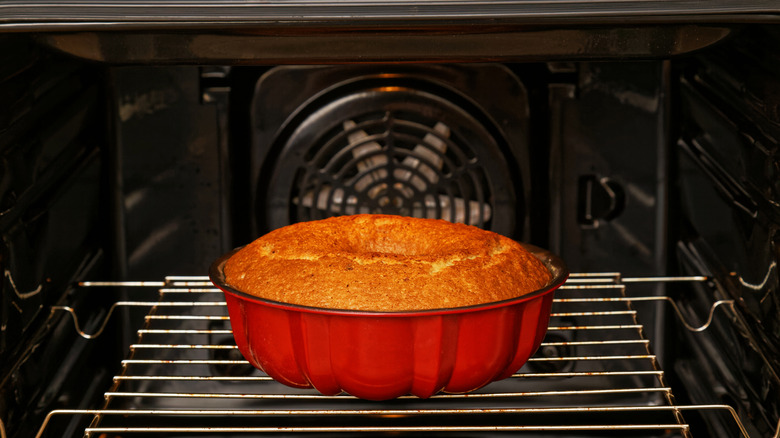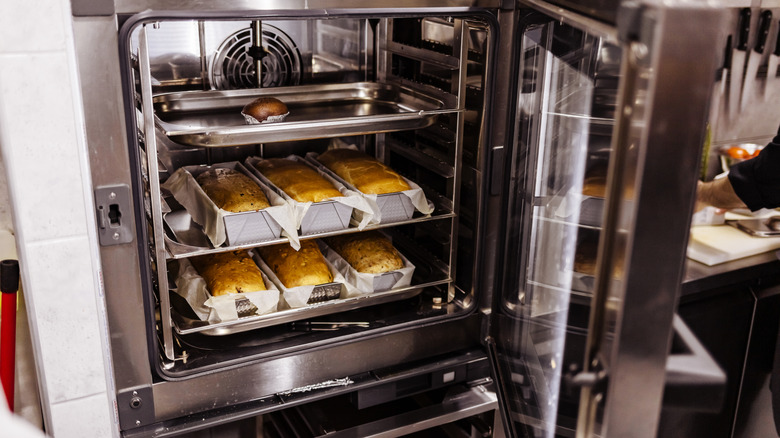Why Convection Baking Isn't Always The Best Bet For Cakes
One of the most pleasurable cooking experiences that you can have is baking a cake. You can perfect a traditional cake recipe, perhaps by making a classic chocolate layer cake or baking a classic buttermilk vanilla cake. You can also make a beautiful original cake that will impress people with your creativity. If you're inspired to show off your baking skills by making a unique and great-tasting cake, then you're likely in store for a rewarding experience — unless you use a convection bake.
Convection ovens contain a fan that constantly distributes air throughout the inside of the oven while baking. Because of this constant air circulation, convection ovens maintain a steady flow of heat that allows food to cook considerably quicker than in conventional ovens. But if you try to bake a cake in a convection oven with the convection setting on, that consistent heat from the fan and exhaust system can make your cake rise improperly or ruin its taste and texture.
What happens to a cake when it's baked in a convection oven
Since cake batter is typically fluffy, the steady circulation of heat in a convection oven can flatten the air bubbles that form in the batter. As a result, that swirling hot air can stymie how high the cake rises, causing a convection-baked cake to lack height, not have enough fluff, and be too dense. Your cake may not get a marvelous loft since a convection bake can literally stop the cake from rising to its full potential.
The constant heat from a convection oven's fan and exhaust system can also bake your cake too quickly and unevenly. The circulating hot air blows needed moisture off of the cake's surface, causing the outside of the cake to bake quickly into a hard crust, and the inside to be underbaked. It can also lead to a burnt cake.
Most standard cake recipes instruct for thermal baking in a conventional oven, also called a "regular bake." In a regular oven, hot air flows freely from the top and bottom of the oven without being forced to fill the entire oven cavity with a fan, so foods cook slower in a regular oven than in a convection oven.
Use these tips for baking a cake in a convection oven
You can still bake a beautiful, delicious cake in a convection oven using a standard cake recipe, but you need to make important adjustments from a regular bake to achieve the best results. One is to first pre-heat the oven to the temperature that your standard cake recipe instructs. Once the oven is heated to that degree, adjust that temperature by lowering it by 25 degrees for your convection bake. As a result, less steady heat will circulate throughout the oven cavity. This will ensure that the cake isn't baked too quickly, so the inner and outer layers of your cake will cook evenly and fully, and your cake will rise properly.
Another tip is to let your cake bake in a convection oven without covering the baking pan with aluminum foil to allow more heat to reach and bake the cake. Since your cake will bake considerably faster in a convection oven than in a regular oven, carefully monitor your cake throughout a convection bake. Ten minutes before your cake is set to complete baking, check the cake to see if it is done already.
Although baking a cake in a convection oven may require more attention than baking in a regular oven, you can still use it to bake the cake of your dreams. But those aren't the only ovens you can use. You can also bake a full-sized cake in a toaster oven.


